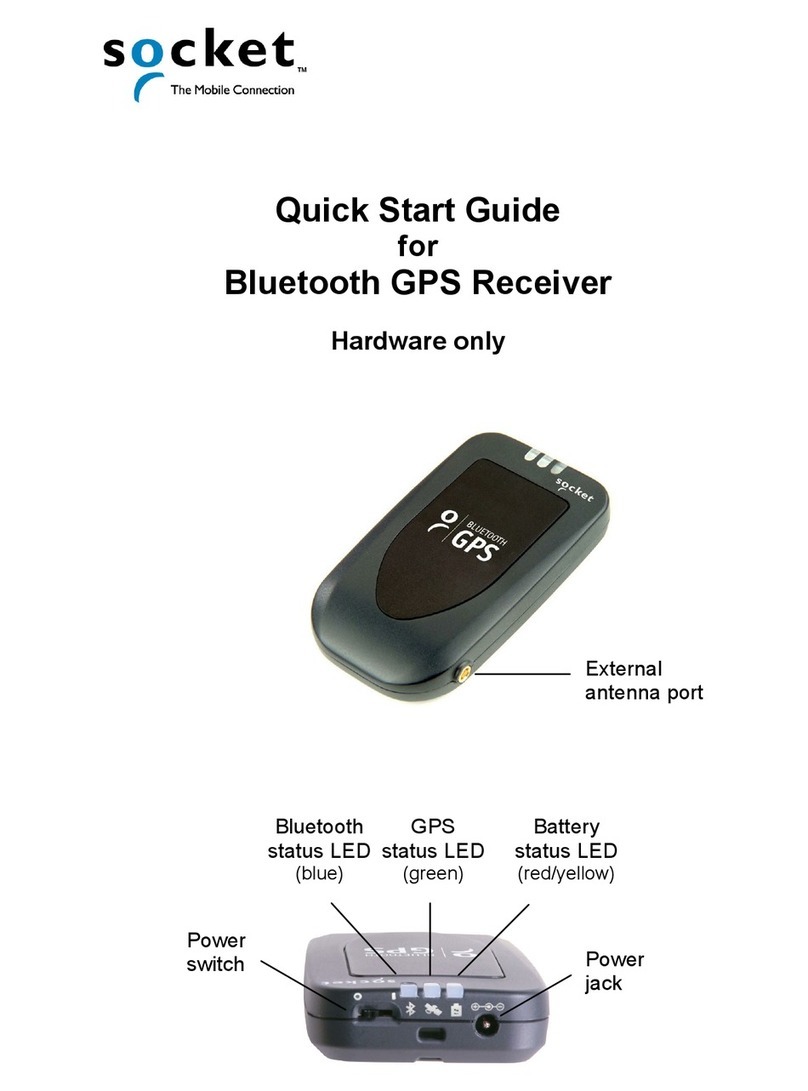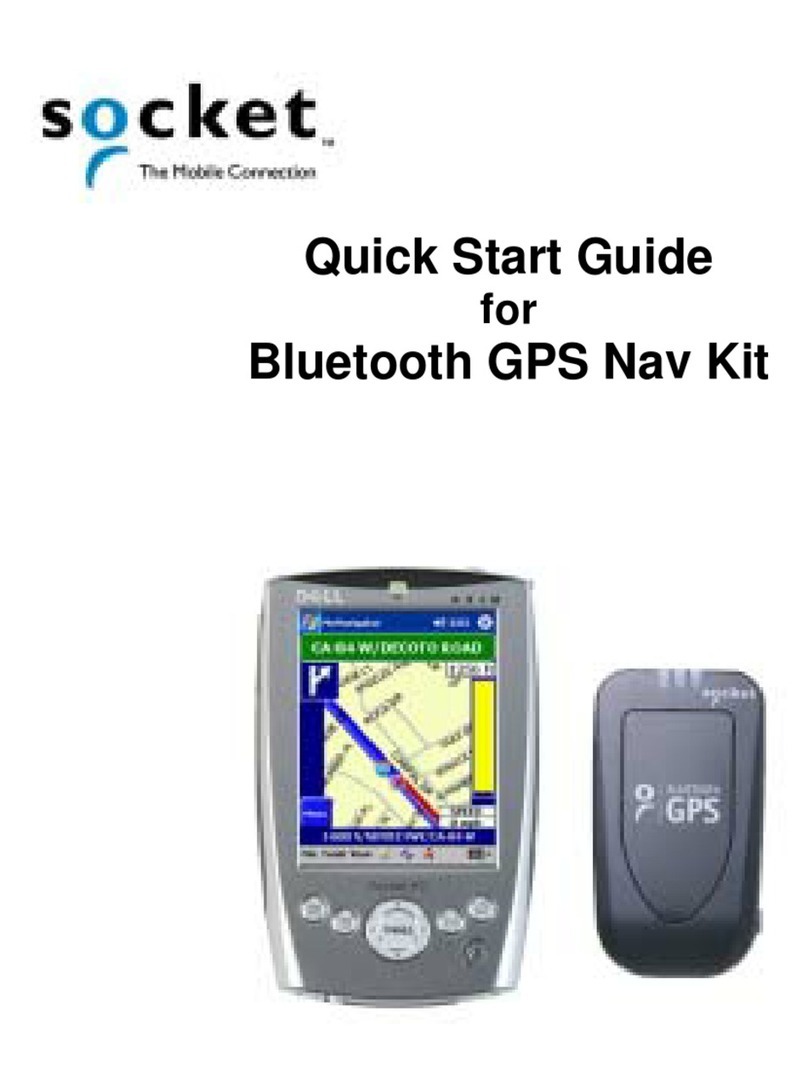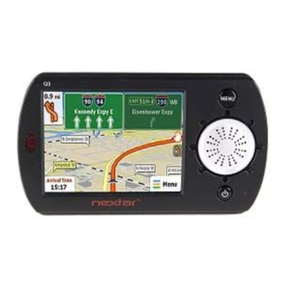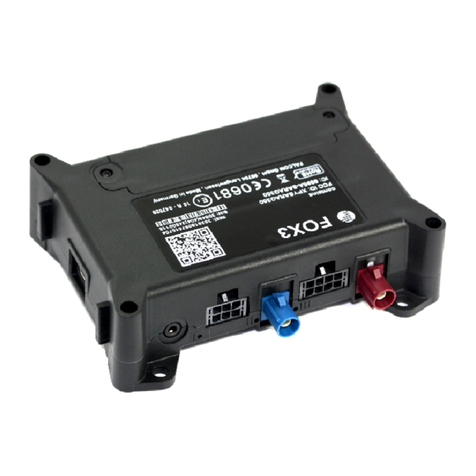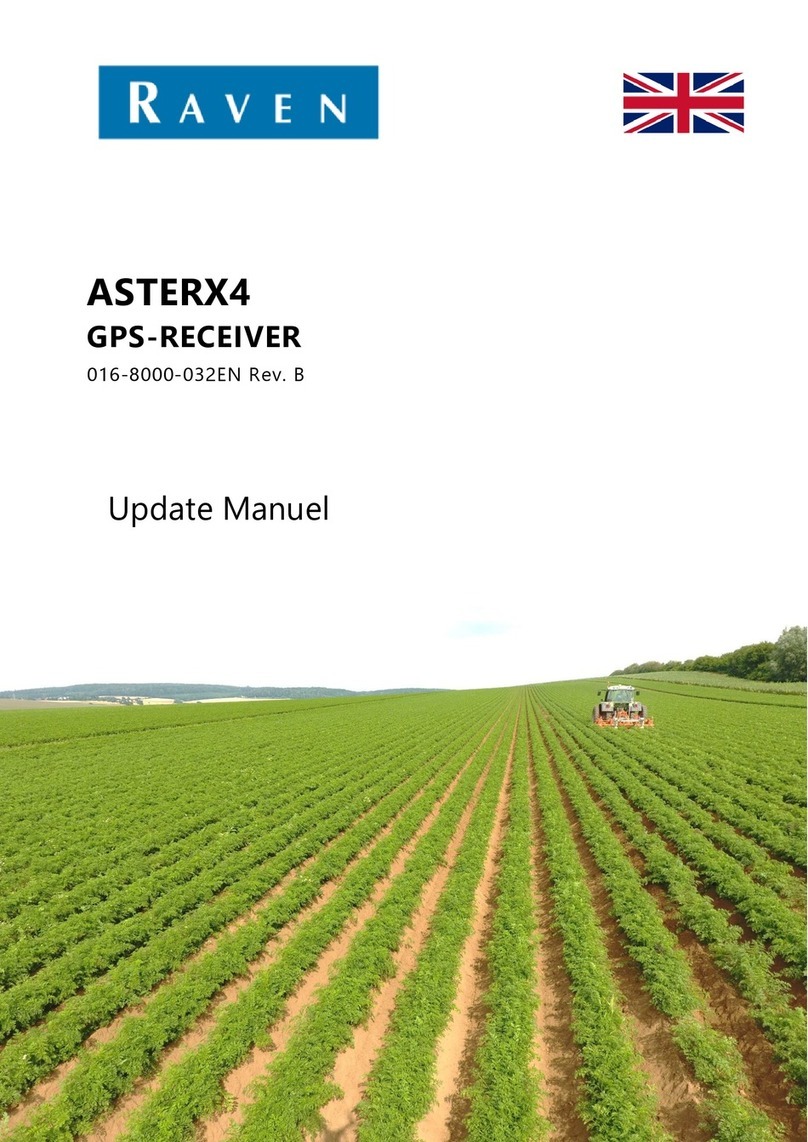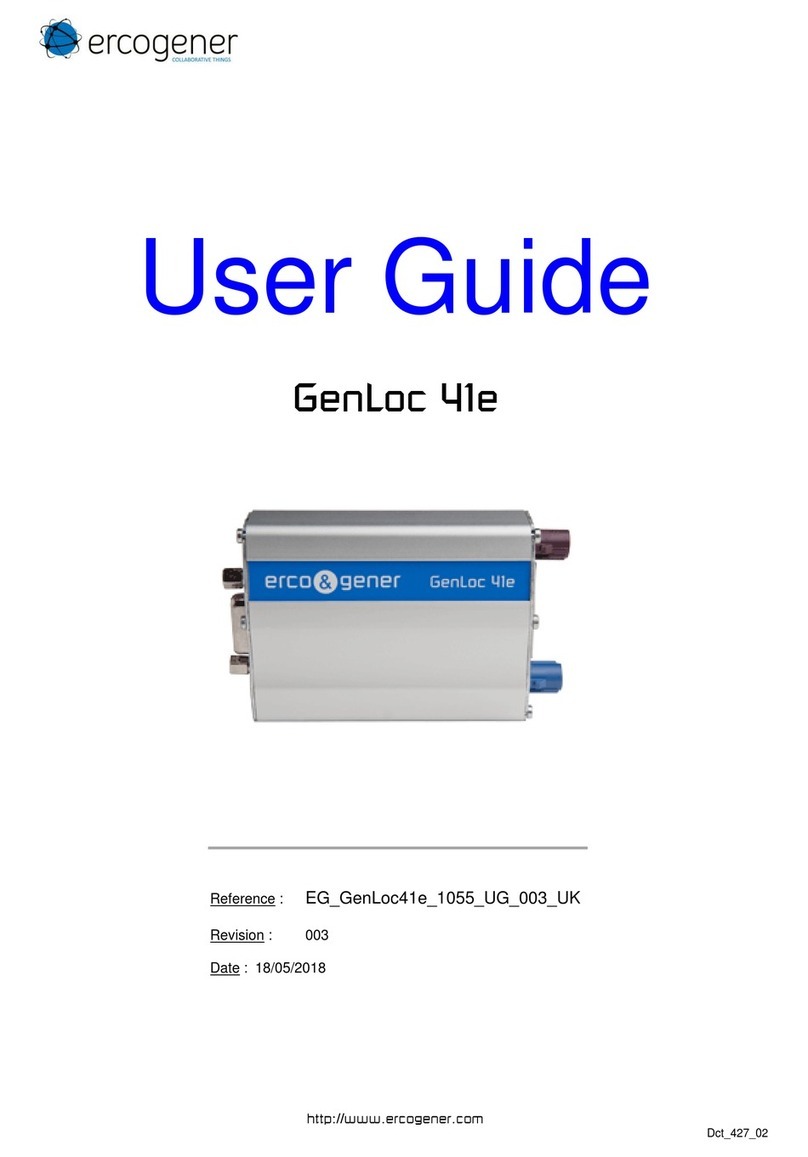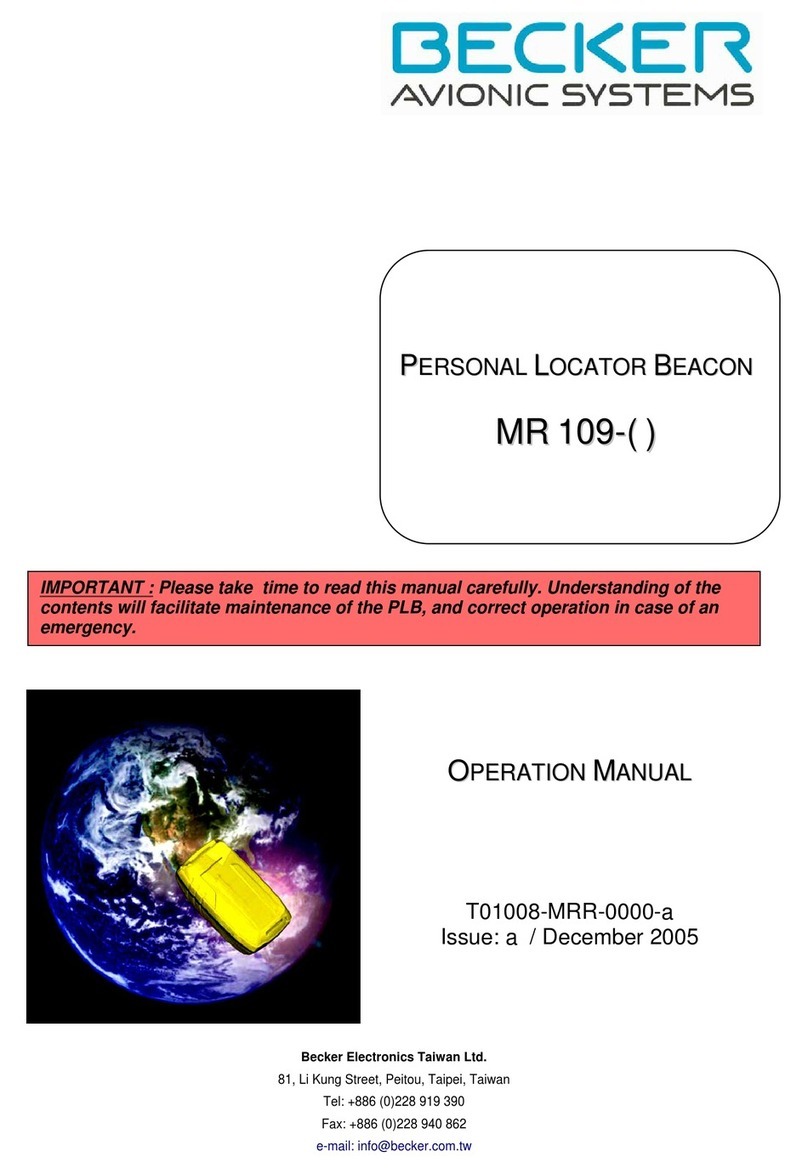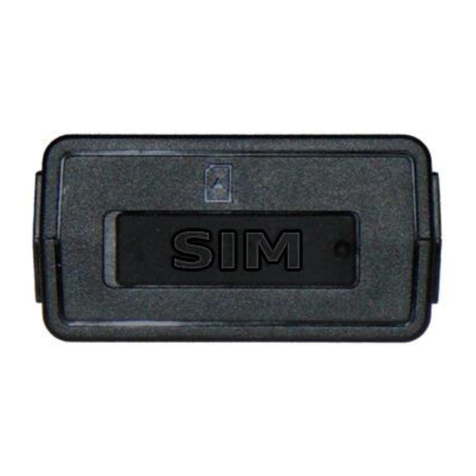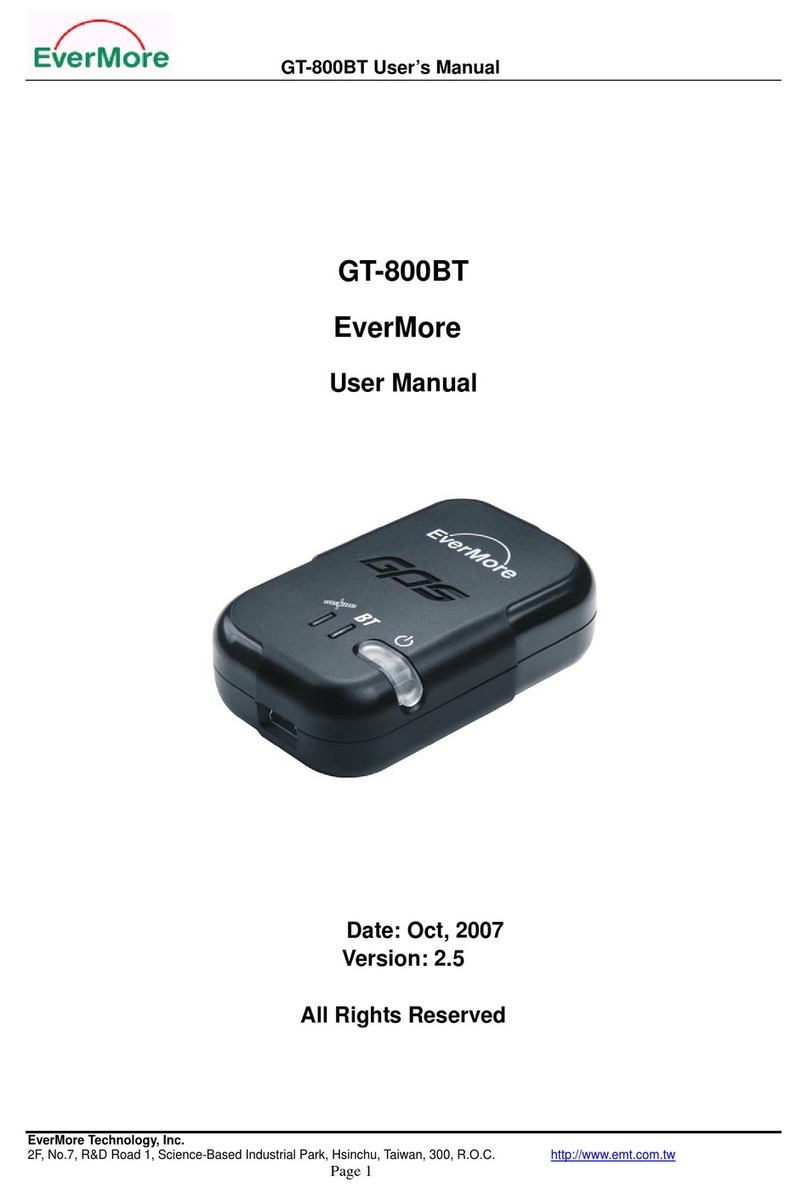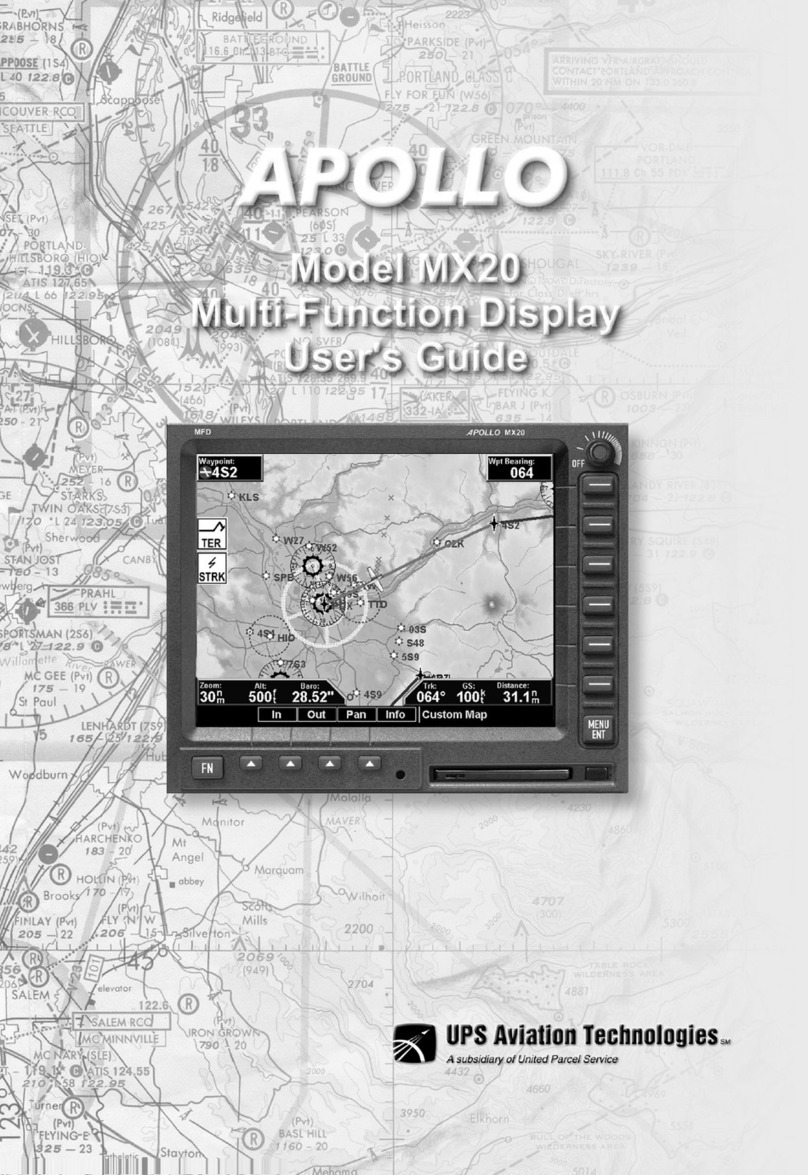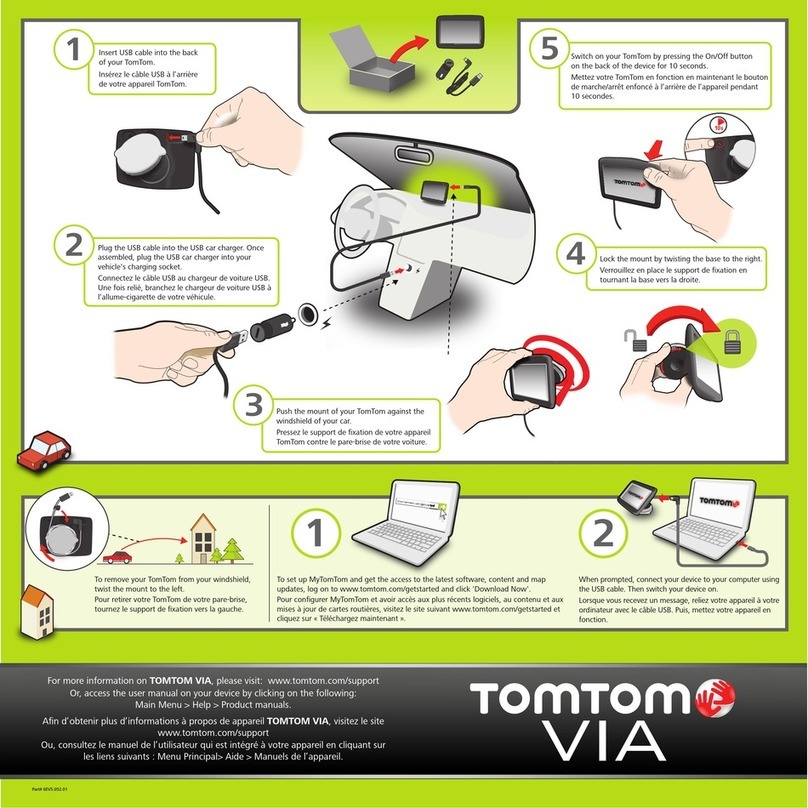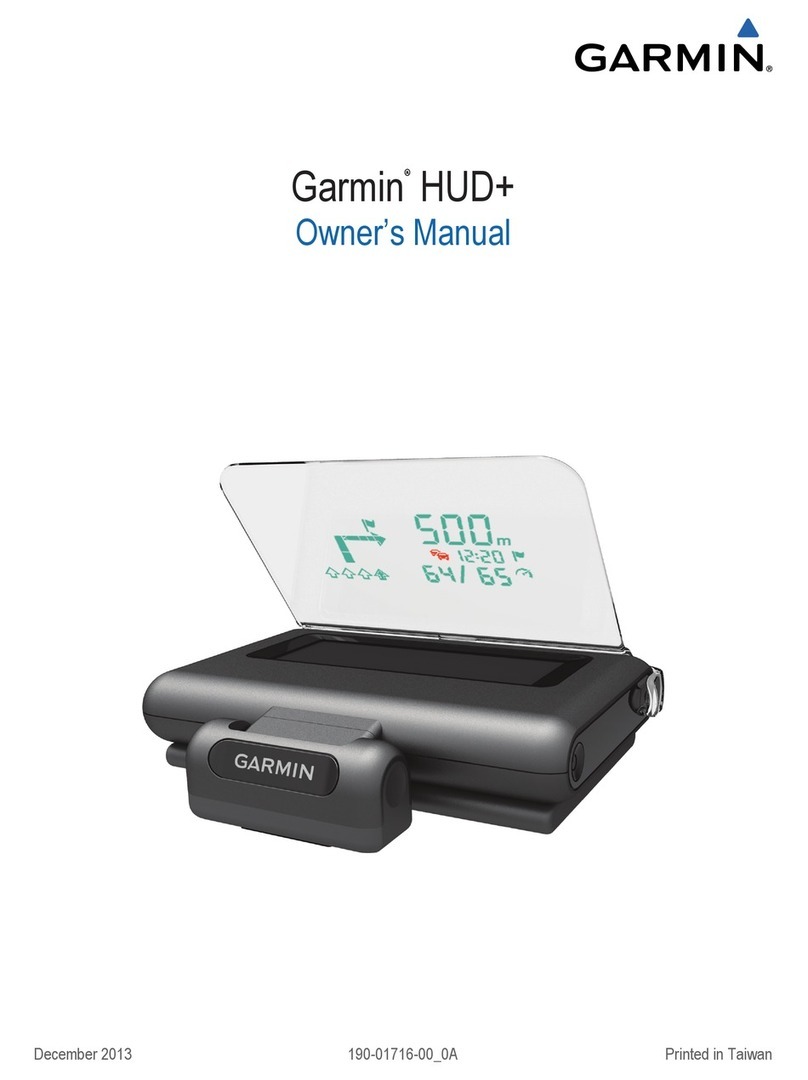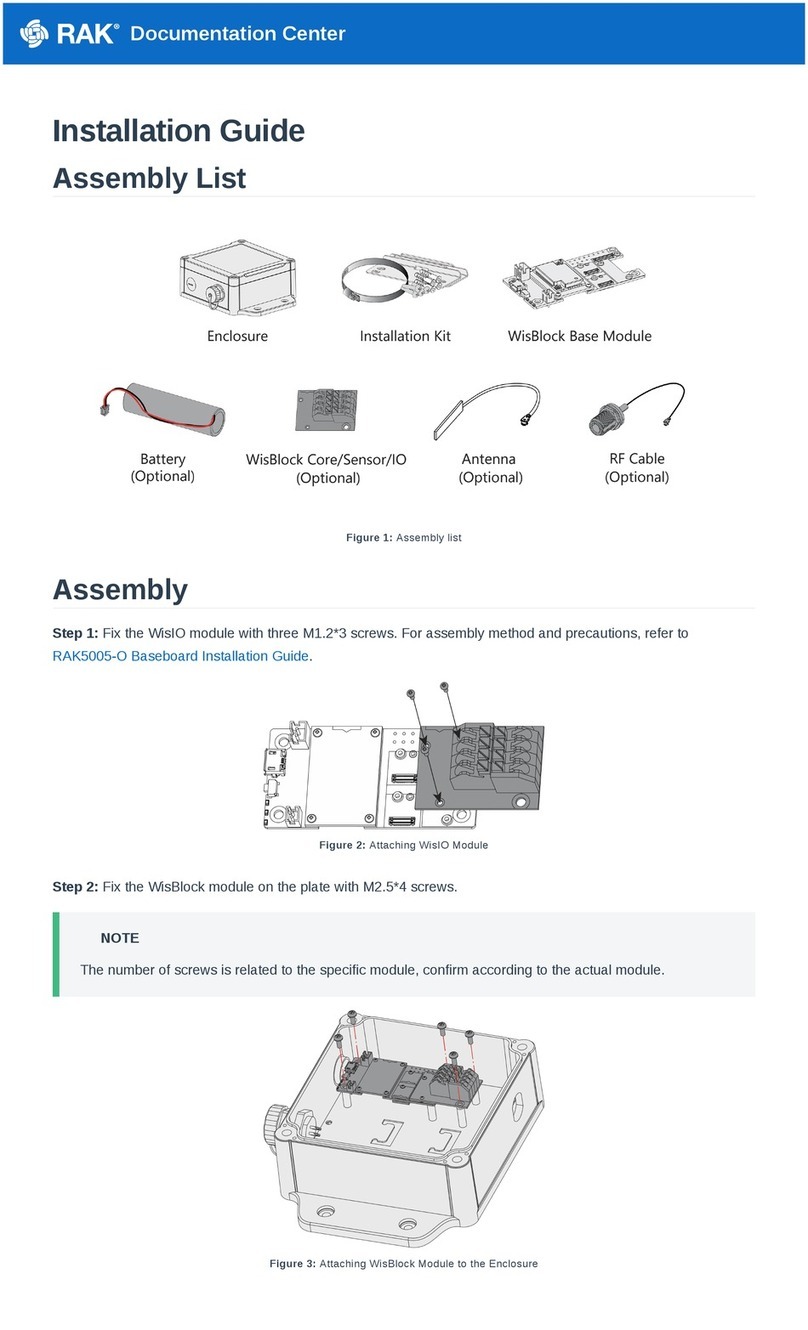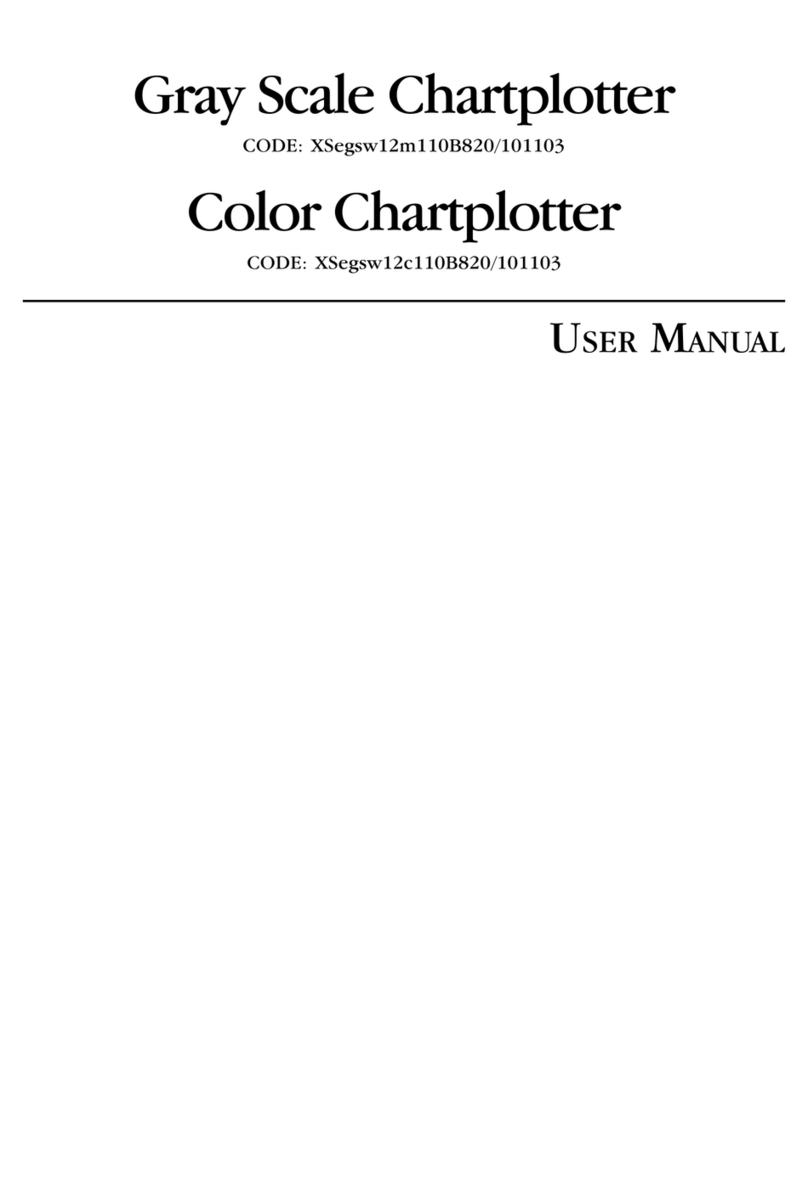Socket GPS Receiver User manual

s
Quick Start Guide
GPS Receiver with
Bluetooth®Wireless Technology
Hardware only

2
Setup Instructions
STEP 1: Charge the Battery
1. Charge the GPS Receiver. Unplug the rubber
grip on the bottom right of the unit to expose the
power jack. Connect a DC charger to a vehicle
cigarette lighter, or connect an AC charger to an
electrical outlet. As the device charges, the
Battery Status LED will emit a solid amber light.
Note: The adapter rating is 5V, 2A, positive pole center. AC and DC
adapters of most recent Pocket PCs from Casio, Compaq, Dell, Fujitsu,
and Toshiba are compatible. The included DC power charger works
with 12V AC input systems, but NOT 24V AC input systems.
2. When the battery is more than 90% full, the LED will turn off. Unplug
the device and remove the charger. A fully charged battery should
provide roughly 9 hours of operation.
STEP 2: Turn on Receiver and Wait for GPS Fix
1. To obtain a GPS fix, you must be outdoors or in a vehicle, and the GPS
Receiver must have a direct line of sight to the sky.
2. Turn on the GPS Receiver. Make sure the unit is right-side up,
with the Socket logo facing the sky. Wait for the GPS Status
LED to blink green, indicating that it has obtained a GPS fix.
Note:
• The first time the GPS unit obtains a fix, it may take from less than a
minute to more than several minutes depending on many factors such
as: the time of day and how many satellites are above the horizon, your
physical location on the globe (relative to where you last used the unit),
the line of sight to satellites, and natural obstructions like mountains or
buildings, and nearby reflective surfaces like water or buildings.
• If the unit must be placed near a large metal surface, for the best signal
reception, place it directly on the surface instead of above the surface.
• A multi-path situation exists if GPS signals arrive at the antenna
directly from the satellite and also from reflective surfaces like water or
building walls. If there is a direct path and a reflected path, the receiver
can usually detect the situation and compensate. If there is no direct line
of sight, but only reflections, then the receiver will generate an
erroneous result. If there are only few satellites in sight, the navigation
solution might be wrong by several hundred meters.

3
• Certain windshields contain materials such as mercury vapor barriers
which can block or reduce GPS signals. Certain metals such as lead
(e.g., in lead-based paint) can also block GPS signals from the receiver.
STEP 3: Connect to Bluetooth Enabled Mobile Computer
For specific Bluetooth connection instructions, refer to the documentation
for your Bluetooth hardware and GPS software.
1. The Bluetooth Status LED should be emitting a solid blue light
to show that the Bluetooth radio is on but not connected. From
your mobile computer, perform a Bluetooth device discovery.
2. Pair and bond with the GPS Receiver. Enter the passkey 1234.
3. After the GPS Receiver and mobile computer have connected, the
Bluetooth Status LED will blink blue.
4. Determine which COM port number your mobile computer is using for
Bluetooth outbound serial communication. Refer to the user
documentation for your Bluetooth hardware/software for instructions.
5. If you are using the Socket SDIO or CF Connection Kit with a Pocket
PC, set the GPS Receiver as your Favorite COM Port. In the Bluetooth
Devices folder, tap Tools | My Favorites | COM Port and select BTGPS.
STEP 4: Use GPS Application
1. Make sure your GPS software is compatible with the Socket GPS
Receiver. The software must be able to use the COM port assigned to
your mobile computer for outbound Bluetooth serial communications.
2. Load the GPS program plus any needed maps onto the mobile computer.
3. Start the program. Set it for the correct COM port for outbound
Bluetooth serial communication. If needed, set the baud rate to 4800
bps.
4. Now you should be ready to use the program. Refer to the software user
documentation. More configurations may be needed.
Product Registration
Socket highly recommends that all customers register their Socket products.
Register online at: www.socketcom.com/prodreg/ On the right side of the
page, click New Registrant.
Warning — Heat Damage
Do not expose the GPS Receiver to temperatures above 140° F (60° C),
(e.g., in a car under direct sunlight). Exposure to high temperatures can
shorten the life of the GPS Receiver, melt or drape the plastic, damage the
internal battery, and increase the risk of explosion.

4
Status Indicator LEDs
LED LED Activity Meaning
Solid Blue Bluetooth radio is on, but not connected.
Bluetooth
Status
Blinking Blue Bluetooth radio is on, connection
established.
Off GPS fix has not been obtained.
GPS Status
Blinking Green GPS fix has been obtained.
Blinking Red Running on battery power, with battery
less than 10% full. Charge immediately.
Solid Amber Connected to power charger, with battery
less than 90% full.
Off when
connected to
power charger
Battery is more than 90% full.
Battery
Status
Off when not
connected to
power charger
Device is running on battery power, with
battery more than 10% full.
Technical Support
If you have trouble installing or using the GPS Receiver, Socket has two
technical support resources to help you:
1. Socket On-Demand Support (SOS)
Socket On-Demand Support is an interactive technical
support program that focuses in on your specific problem
to provide the answers you need. SOS provides
immediate service and is the best place to start for technical support. To
access SOS, visit: www.socketcom.com/support. Click on the SOS icon.
If SOS cannot solve your problem, end the session by submitting an
email inquiry to a Socket technical support engineer as prompted. Your
interactive session will be saved for reference. To expedite technical
support, you will be asked to register your product and provide some
system information.
2. Live Technical Support
IMPORTANT! To obtain live technical support, you must first register
your product online at www.socketcom.com/prodreg.
Immediately after product registration, you will be given the option to
submit a problem. Click on this option to submit an email inquiry to a
technical support engineer. If we cannot resolve your inquiry via email,
we can arrange for a support engineer to call you at a specific time.

Limited Warranty
Socket Communications Incorporated (Socket) warrants this product against defects
in material and workmanship, under normal use and service, for the following
period from the date of purchase:
GPS Receiver with Bluetooth® Wireless Technology: 3 years
Incompatibility is not a defect covered by Socket’s warranty. During the warranty
period, Socket will, at its option, repair or replace the defective product at no charge
when furnished with proof of retail purchase, provided that you deliver the product
to Socket or to an authorized Socket Service Center.
The returned product must be accompanied by a return material authorization
(RMA) number issued by Socket or by an authorized Socket Service Center. If you
ship the product, you must use the original container or equivalent and you must pay
the shipping charges to Socket. Socket will pay shipping charges back to any
location in the contiguous United States. This warranty applies only to the original
retail purchaser and is not transferable.
Socket may, at its option, replace or repair the product with new or reconditioned
parts and the returned product becomes Socket's property. Socket warrants the
repaired or replaced products to be free from defects in material or workmanship for
ninety (90) days after the return shipping date, or for the duration of the original
warranty period, whichever is greater.
This warranty does not cover the replacement of products damaged by abuse,
accident, misuse or misapplication, nor as a result of service or modification other
than by Socket.
SOCKET IS NOT RESPONSIBLE FOR INCIDENTAL OR CONSEQUENTIAL
DAMAGES RESULTING FROM BREACH OF ANY EXPRESS OR IMPLIED
WARRANTY, INCLUDING DAMAGE TO PROPERTY AND, TO THE EXTENT
PERMITTED BY LAW, DAMAGES FOR PERSONAL INJURY. THIS
WARRANTY IS IN LIEU OF ALL OTHER WARRANTIES INCLUDING
IMPLIED WARRANTIES OF MERCHANTABILITY AND FITNESS FOR A
PARTICULAR PURPOSE.
Some states do not allow limitation of implied warranties, or the exclusion or
limitation of incidental or consequential damages, so that the above limitations or
exclusions may not apply to you. This warranty gives you specific legal rights and
you may also have other rights which vary from state to state.
This product may contain fully tested, recycled parts, warranted as if new.
For warranty information, phone (510) 744-2700.
Please refrain from disassembling the GPS Receiver. Disassembly of this
device will void the product warranty.

Regulatory Compliance
The Socket GPS Receiver is designed to be compliant with the rules and regulations
in locations where they are sold and will be labeled as required. This product is type
approved — users are not required to obtain license or authorization before using.
This product has been certified as conforming to technological standards. Therefore,
the following actions are punishable by law:
• Disassembly or modification of this product
• Removal of identification labels on the back of the product
The frequency used by this product is also used by industrial, scientific and medical
devices, such as microwave ovens, as well as wireless detectors for motion
detectors, such as those requiring licenses used on manufacturing lines or similar
radio transmitters (all of these wireless devices will be called “other wireless
transmitters” below). Most modern electronic equipment, (e.g., in hospitals and
cars), is shielded from RF energy. However certain electronic equipment is not.
1. Please ensure that all medical devices used in proximity to this device meet
appropriate susceptibility specifications for this type of RF energy.
2. In the unlikely event that there is electronic interference between this system
and other wireless transmitters, quickly change the location of operation or stop
operating the unit (cease signal transmission).
3. If other electrical interference or related problems occur, please contact Socket
technical support at +1-510-744-2720.
Radio Frequency Interference Requirements
This device complies with part 15 of the FCC rules and Industry Canada RSS 210.
Operation is subject to the following conditions: (1) This device may not cause
harmful interference, and (2) this device must accept any interference received,
including interference that may cause undesired operation.
CAUTION: Change or modification not expressly approved by the party responsible
for compliance could void the user’s authority to operate this equipment.
This equipment is ETS 300 328-2, ETS 301 489-1 and ETS EN301 489-17
compliant. These limits are designed to provide reasonable protection against
harmful interference when the equipment is operated in a commercial environment.
This equipment generates, uses, and can radiate radio frequency energy and, if not
installed and used in accordance with the instruction manual, may cause harmful
interference to radio communications. Operation of this equipment in a residential
area is likely to cause harmful interference, in which case the user will be required
to correct the interference at his or her own expense.
In order for this device to comply with FCC rules, under the provision of Part
15.247(b)(c), it must operate in a manner that ensures that the public is not exposed
to radio frequency levels in excess of the Maximum Permissible Exposure (MPE)
limits.
To comply with Industry Canada RF exposure compliance requirements, the
following antenna installation and device operating configurations must be satisfied:

“The installer of this radio equipment must ensure that the antenna is located or
pointed such that it does not emit RF field in excess of Health Canada limits for the
general population; consult Safety Code 6, obtainable from Health Canada’s
website: www.hc-sc.gc.ca/ehp/ehd/catalogue/rpb.htm
If this equipment does cause harmful interference to radio or television reception,
which can be determined by turning the equipment off and on, the user may try to
correct the interference by one or more of the following:
• Reorient or relocate the receiving antenna of the radio or television.
• Increase the distance separating the equipment and the receiver.
• Connect the equipment to an outlet on a different branch circuit than that of the
receiver.
• Consult the dealer or an experienced radio/TV technician for help.
The user may find the following booklet helpful: How to Identify and Resolve
Radio-TV Interference Problems. This booklet is available from the U.S.
Government Printing Office, Washington, D.C. 20402.
Radio Frequency Interference Requirements – Canada
This Class B digital apparatus meets the requirements of the Canadian Interference-
Causing Equipment Regulations. Cet appareil numérique de la Classe B respecte
toutes les exigencies du Reglement sur le Matériel Brouilleur du Canada.
NOTE: To comply with FCC and Industry Canada exposure requirements, this
device is approved for operations in a user’s hand when there is a distance of 20 cm
or more between the device antenna and the user’s body.
CE Marking & European Union Compliance
Products intended for sale within the European Union are marked with a CE Mark,
which indicates compliance to applicable Directives and European Normes (EN), as
follows. Amendments to these Directives or ENs are included: Normes (EN), as
follows:
Applicable Directives:
• R&TTE Directive 1999/5/EC Low Voltage Directive 73/23/EEC
Applicable Standards:
• EN 55 022 – Limits and Methods of Measurement of Radio Interference
Characteristics of Information Technology Equipment.
• EN 50 082-1 – Electromagnetic Compatibility – General Immunity Standard, Part
1: Residential, Commercial, Light Industry.
• IEC 801.2 – Electromagnetic Compatibility for Industrial Process Measurement
and Control Equipment, Part 2: Electrostatic Discharge Requirements.
• IEC 801.3 – Electromagnetic Compatibility for Industrial Process Measurement
and Control Equipment, Part 3: Radiated Electromagnetc Field Requirements.
• IEC 801.4 - Electromagnetic Compatibility for Industrial Process Measurement
and Control Equipment, Part 4: Electrical Fast Transients Requirements.
• EN 60 950 + Amd 1 + Amd 2 – Safety of Information Technology Equipment
Including Business Equipment

Printed in U.S.A.
Note that the radio frequency band used by this equipment has not been harmonized
in all the EU.
Applicable area (nation): Austria, Belgium, Denmark, Finland, France, Germany,
Greece, Iceland, Ireland, Italy, Luxembourg, Norway, Portugal, Spain, Sweden,
Switzerland, The Netherlands, United Kingdom
Battery Recycling
Your device contains a rechargeable lithium ion battery. Do not dispose of your
device’s battery in a fire or with normal household waste. Battery cells may
explode. Contact your local waste disposal agency for disposal instructions. Dispose
of a spent of damaged battery promptly.
September 2004 Document # 6430-00202 F
Copyright Notice
Copyright © 2004 Socket Communications, Inc. All rights reserved.
Socket, the Socket logo and Battery Friendly are registered trademarks of Socket
Communications, Inc. GPS Receiver with Bluetooth Wireless Technology are
trademarks of Socket Communications, Inc. Bluetooth and the Bluetooth logos are
trademarks owned by i SIG, Inc., U.S.A. and licensed to Socket Communications,
Inc. All other brand and product names are trademarks of their respective holders.
Reproduction of the contents of this manual without the permission of Socket
Communications is expressly prohibited. Please be aware that the products
described in this manual may change without notice.
Feel free to contact SOCKET COMMUNICATIONS at:
Socket Communications, Inc.
37400 Central Court
Newark, CA 94560
Other than the above, Socket Communications can assume no responsibility for
anything resulting from the application of information contained in this manual.
Please refrain from any applications of the Socket product that are not described in
this manual. Socket Communications also requests that you refrain from
disassembling the card. Disassembly of this device will void the product warranty.
Track new product releases and technical bulletins at: www.socketcom.com.
Table of contents
Other Socket GPS manuals

